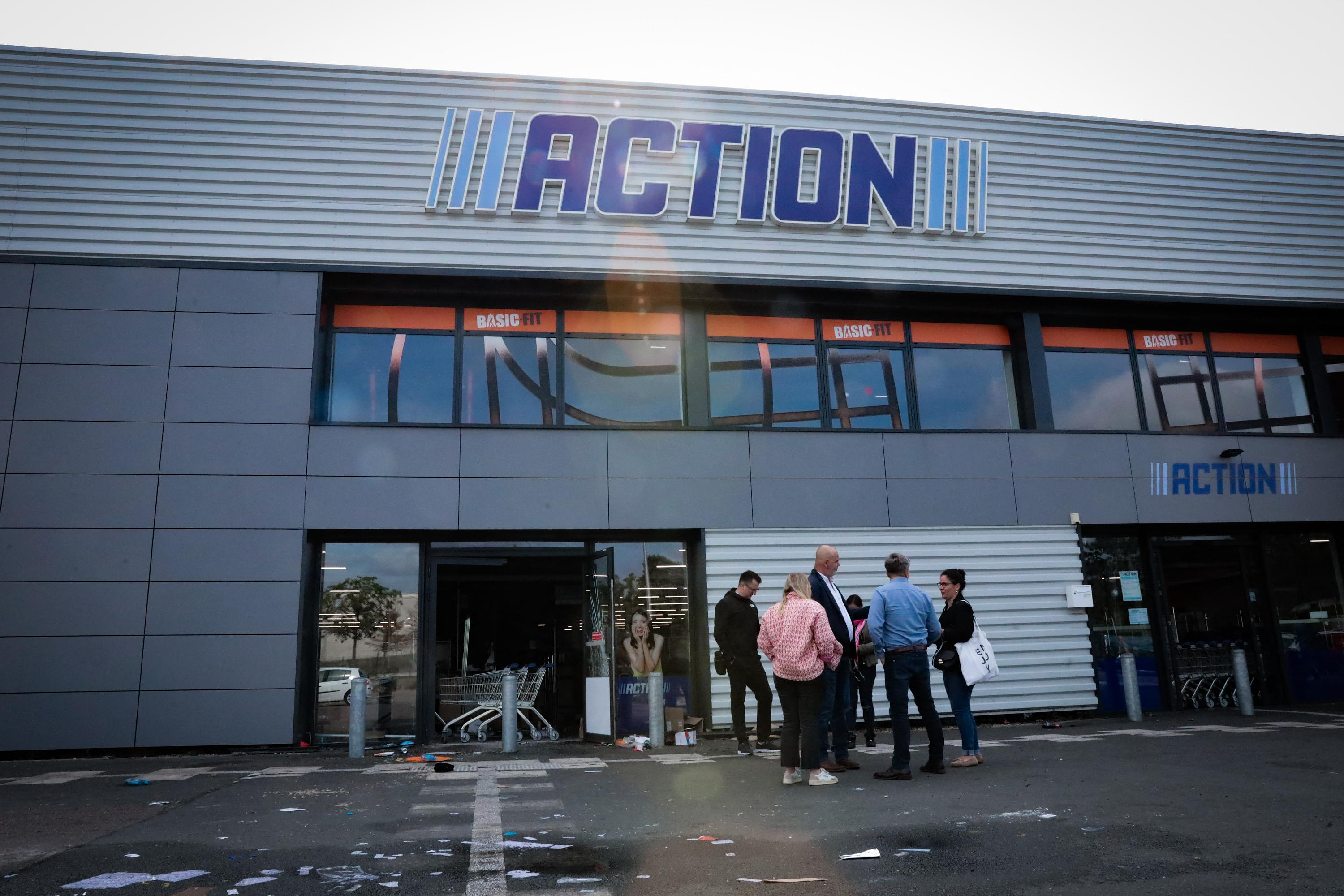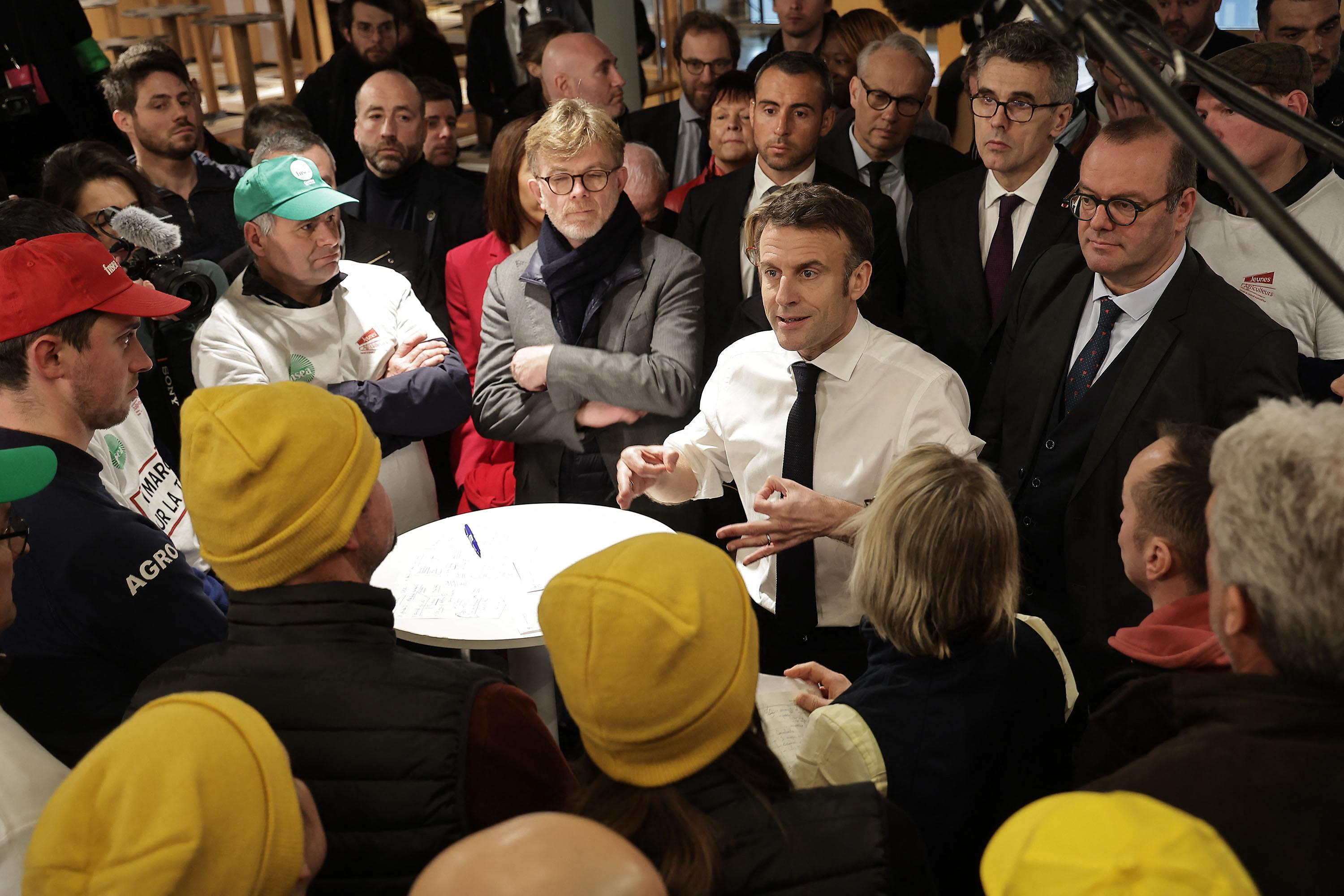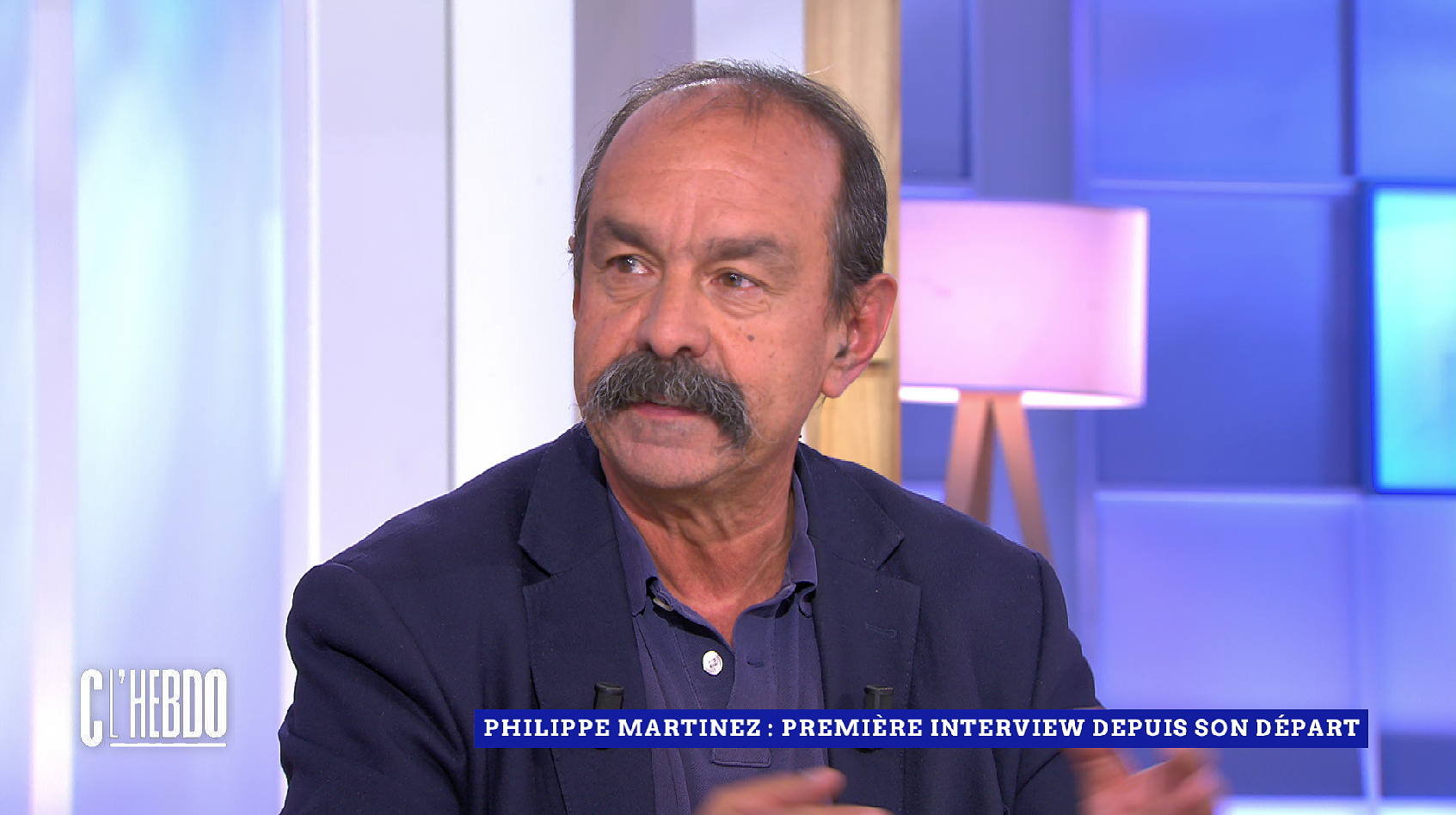Berlin, Germany's most visited city with a good ten million overnight guests in 2022, is also the hotel capital. There are more than 700 houses, nowhere else in the country is the selection so large. Hotels with a history are particularly atmospheric, and a new trend is emerging in this category: repurposing. Visionary doers give unused official buildings, half-ruined town houses and even a former prison a second life and protect them from vacancy and decay. Four accommodation suggestions for your next holiday in the capital.
communication is everything. That was already the case a good 100 years ago, when Berlin got a new main telegraph office, the most beautiful, largest and most modern in the whole country. It was in operation until 1992, after which the monumental building with the neo-baroque facade stood empty for decades.
It took ten years of renovation, but now it is ready for new tasks. Which are no less communicative: As a hotel "Telegraphenamt" (deliberately written with a historical "ph"), the house offers fast connections between its guests and the city. After all, it's in the middle of Berlin-Mitte, right next to Monbijoupark, between Museum Island and the Scheunenviertel with its galleries and hip shops.
The hotel operator knows how to bring people together: Roland Mary is one of the stars among Berlin's restaurateurs, head of the legendary "Borchardt", the restaurant with guaranteed celebrity density. Mary has been a car mechanic, actor, musician - but never a hotelier. "An attractive task," he finds, especially in this unique building: "It's a crazy project."
Is correct. The lavish dimensions of the former flagship office alone are unusual: the foyer, bar, restaurant and even more so the halls are large and high. The brick walls are partially exposed, on the beautifully undulating ceilings - original Berlin vaults - run uncovered pipes. Lamp cables are not hidden even in the rooms, the lattice walls in the elevator allow a view into the shaft. What would appear raw and unfinished elsewhere is a reference to history here: Technology is the soul of the house. Or, as hotel manager Mary puts it: "We show what it was and what it is."
That's why you look into the tube everywhere. The organ pipe-like metal objects in the foyer and restaurant are original parts of the old pneumatic tube system of the main telegraph office. The "pneumatic message delivery" was the e-mail of that time: the Berlin pneumatic tube network stretched 400 kilometers in its heyday, the headquarters was in the basement of the telegraph office, as evidenced by the huge compressed air pipes that are still standing here today. They served as an inspiration for the hotel design: Whether lamps, shelves, armchairs - tubular shapes are omnipresent, even the small flower vases are tubes bent into a U.
The industrial aesthetic is combined with decorative references to the 1920s: beaded-lined lamps, Art Deco fan arches, black rotating light switches in the rooms, a rotary phone by the bed, and the TV hidden behind the pleated curtains of a hanging display case. A bit of "Babylon Berlin", at today's comfort level, of course.
The smallest of the 97 rooms measure 21 square meters, the largest 140, the bathrooms have underfloor heating and separate toilets, and there are also organic gummy bears in the minibar. The maisonettes are equipped with a dining table and kitchenette, in which the arched windows, which are more than four meters high, come into their own in all their glory. The view goes to the eastern part of the city, always in the centre: the television tower. And the bed is a box seat for Berlin sunrises.
A fitness area is still under construction, and a Japanese bakery is moving into the foyer. In the "Root" restaurant, on the other hand, which opened in November, there is already a lot going on. It is located in the inner courtyard, which, like a hundred years ago, is now covered by a glass roof. Bistro style, lots of green plants, and all the moons are shining from the sky: spherical glass lamps, painted with colorful faces and reminiscent of Edvard Munch's Scream, only much happier.
The food, which combines diverse culinary traditions, will definitely put you in a good mood. There is a sushi master, but also deer crackers with kale and smoked pork. Those who like it meatless will love the baked root vegetables or the skillfully balanced curry. But it's not just the good food and the attentive service that ensure that the place is buzzing and that you also discover prominent faces. Roland Mary has once again succeeded in turning a restaurant into a social hotspot. Communication is everything.
Further information: Telegraphenamt, Monbijoustraße 11, Mitte district, near Museum Island, double rooms from 257 euros, telegraphenamt.com
A ghost shows the way: The veiled bronze sculpture stands in front of the corner house from the Wilhelminian period, which is adorned with red neon writing: "Château Royal". Of course, the name, which translates to "Royal Palace", is a tongue-in-cheek exaggeration, because the building complex was never a palace; the castle ghost is a wonderful accessory.
In the two listed buildings in which the "Château" resides, people used to live and work in a middle-class manner, but they have certainly experienced a certain ennobling thanks to careful renovation and well-considered design language.
The ghost, created by Alicja Kwade, is one of the many works of art on display at the hotel, which opened last autumn. The "Château Royal" spells its name in unpretentious neon. Elegance, often a shaky affair in the capital, is confidently interpreted here in a modern way.
Albeit with historical references: Berlin's glorious years, from the early days to the roaring twenties, serve as a point of reference for furnishing and design. Oak paneling, sisal runners on the stairs, colored marble, large dark green tiles reminiscent of old subway stations, double windows, herringbone parquet and mastic asphalt, the so-called Berlin terrazzo. That suits Mitte - the Brandenburg Gate and Friedrichstrasse are just a few steps away - and provides a Berlin foundation without appearing costumed.
"It was important to us to create something that could have been here before - and at the same time has something timeless," says Moritz Estermann, managing partner. He belongs to the group around restaurateur and art connoisseur Stephan Landwehr, who, with the premium steakhouse "Grill Royal" and a number of other establishments in the certainly not unimaginative Berlin restaurant scene, demonstrate how to confidently combine glamor and coolness.
They took their time planning the hotel, which was given a new top floor and an extension by star architect David Chipperfield, and the vision was ambitious. The house was not only intended to accommodate overnight guests, but also to become a meeting place for Berliners with a bar and restaurant. And: a place for art.
In fact, visitors can walk through the hotel as if it were an exhibition, in the bar, the hallways and the 93 rooms, including 26 suites, works by more than 100 artists are on display. Each room is different, some artists have designed "their" rooms themselves, other pieces have contributed from the warehouse, many come from the collection of the Landwehr.
Sometimes the art is very dominant, so you can be surprised by a strobe light when you shower or by a lullaby when you go to bed. In one room, a wall emits scent molecules when touched, aroma: dancing male person in "Berghain".
That might be “too much” for some guests, says Estermann, “but there are also those who say when they make the reservation: I would like to sleep with the artist”. As exciting as the art is, so soothing is the comfortable furnishings. Warm tones, fine materials, politically correct: a lot comes from craftsmen's workshops in the region, for example armchairs, sofas and lamps were made especially for the "Château Royal".
The wallpaper in the fireplace room was designed by the Berlin artist Thomas Demand, the white-tiled inner courtyard, where carriages once stood and where cars were later repaired, is used as a catering terrace in summer. The bar - eye-catching are the colorful glass plates behind the counter - has already become a popular meeting place for Berlin's cultural scene.
Together with the hotel, the restaurant "Dóttir" has been revived, which the Icelandic Victoria Eliasdóttir ran in these rooms for some time before the renovation. Now she is co-owner of the "Château" and implements the concept of sustainability in culinary terms: with an impressively fresh and aromatically diverse cuisine based on regional products with the extremely sparing use of animal ingredients.
“Are you staying the night?” asks the friendly waitress, “then you must try the overnight oats tomorrow.” The what? Oh, the muesli. This is brought to the table the next morning, a breakfast buffet would be incompatible with the coolness factor of the house or with the basic ecological orientation. And whatever they are called: the flakes, which look like a work of art with strips of apricot puree, almond yoghurt and roasted flaxseed on top, give you a happy start to the day.
Further information: Château Royal, Neustädter Kirchstraße 3, Mitte, near Unter den Linden, double room from 260 euros, chateauroyalberlin.com
Can a building whose only reason for being was punishment and deterrence be transformed into a welcoming place of hospitality? Absolutely! The Berlin architect couple Grüntuch Ernst have provided the proof: They made a remarkable hotel out of a disused, listed women's prison in Charlottenburg's Kantstraße in old West Berlin. Where gloomy austerity once reigned, it is now light and cheerful.
This was achieved through sensitive but decisive redesign: the narrow cells were merged into spacious rooms, the window size was doubled, and a lush garden is now blooming in the prison courtyard that was once so dreary. A penthouse has been added on the roof and a small wellness area accessible to all guests of the 44 rooms and suites: the sauna leads to the roof garden with a magnificent all-round view. The small pool has a glass floor, so daylight falls on the floor corridors.
The safety nets that once hung on each floor to prevent fatal leaps are gone. The former cells are furnished in Nordic light natural tones, Scandinavian flair also in the fireplace room on the ground floor. And in the "Lovis" restaurant in the former lock passage, large window fronts and a swarm of spherical lamps ensure comfort.
This turn from dark to light was accompanied by respect for the history of the building, and even after the redesign it does not deny its former purpose: the blue-grey cell doors, the staircases with the worn iron railings have remained just as much as the bars in front of the windows, which they thank only half cover their enlargement.
"Guests should be able to read the tracks," says Almut Grüntuch-Ernst. She and her husband Armand Grüntuch worked on the conversion for almost ten years. They share the unfamiliar hotelier tasks that came their way with their children, and the “Wilmina” became a family business.
It is obvious that the facility inspires an audience interested in style and construction: When they opened in April 2022, “the first 14 beds were booked exclusively by architects,” says Grüntuch-Ernst. Their hotel had already received the BDA award from the Association of German Architects for architectural achievement.
Further information: Wilmina, Kantstraße 79, Charlottenburg, near Lietzensee, double room from 120 euros, wilmina.com
Try sleeping, you know that from buying a mattress, but here you can test an entire bedroom at the same time: you can buy all the furniture in the "Stilwerk Hotel KantGaragen", and those who stay here can not only try out whether the bed (there are two different manufacturers ) is something for you, but also examine bedside tables, chairs, lamps, mirrors and the mini office table in an everyday test.
And after breakfast, go on a little design shopping tour without leaving the house: the seven-storey new building on Charlottenburger Kantstraße, in which the hotel with its 61 rooms, which opened in autumn 2022, is located, merges into the converted, listed Kantgaragen, in the vor two years ago the design department store Stilwerk moved in.
The fact that the Stilwerk, which previously resided a few hundred meters away on Savignyplatz for years, is now offering overnight stays is a logical development, says hotel director Jessica Schöndorf - the Hamburger Stilwerk also has a hotel, and further locations are planned. The design-oriented clientele is only too happy to try out the pieces of furniture, and a good deal is bought on site after the overnight stay.
The furniture and design shops are housed in a parking garage from 1930, which was Europe's first multi-storey car park to offer heating and lockable individual boxes - and has now been given a second lease of life.
Further information: Stilwerk Hotel KantGaragen, Kantstraße 127, Charlottenburg, near Savignyplatz, double room from 120 euros, stilwerk.com/de/microsite/welcome-im-stilwerk-hotel-kantgaragen
The research was supported by "Telegraphenamt" and "Château Royal". You can find our standards of transparency and journalistic independence at axelspringer.com/de/Werte/downloads.

 B:SM will break its investment record this year with 62 million euros
B:SM will break its investment record this year with 62 million euros War in Ukraine: when kyiv attacks Russia with inflatable balloons loaded with explosives
War in Ukraine: when kyiv attacks Russia with inflatable balloons loaded with explosives United States: divided on the question of presidential immunity, the Supreme Court offers respite to Trump
United States: divided on the question of presidential immunity, the Supreme Court offers respite to Trump Maurizio Molinari: “the Scurati affair, a European injury”
Maurizio Molinari: “the Scurati affair, a European injury” Irritable bowel syndrome: the effectiveness of low-carbohydrate diets is confirmed
Irritable bowel syndrome: the effectiveness of low-carbohydrate diets is confirmed Beware of the three main sources of poisoning in children
Beware of the three main sources of poisoning in children First three cases of “native” cholera confirmed in Mayotte
First three cases of “native” cholera confirmed in Mayotte Meningitis: compulsory vaccination for babies will be extended in 2025
Meningitis: compulsory vaccination for babies will be extended in 2025 When traveling abroad, money is a source of stress for seven out of ten French people
When traveling abroad, money is a source of stress for seven out of ten French people Elon Musk arrives in China to negotiate data transfer and deployment of Tesla autopilot
Elon Musk arrives in China to negotiate data transfer and deployment of Tesla autopilot Patrick Pouyanné, CEO of TotalEnergies, is very reserved about the rapid growth of green hydrogen
Patrick Pouyanné, CEO of TotalEnergies, is very reserved about the rapid growth of green hydrogen In the United States, a Boeing 767 loses its emergency slide shortly after takeoff
In the United States, a Boeing 767 loses its emergency slide shortly after takeoff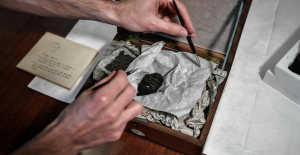 A charred papyrus from Herculaneum reveals its secrets about Plato
A charred papyrus from Herculaneum reveals its secrets about Plato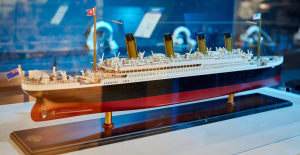 The watch of the richest passenger on the Titanic sold for 1.175 million pounds at auction
The watch of the richest passenger on the Titanic sold for 1.175 million pounds at auction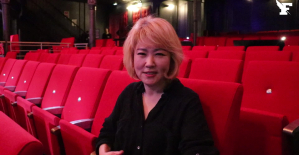 Youn Sun Nah: jazz with nuance and delicacy
Youn Sun Nah: jazz with nuance and delicacy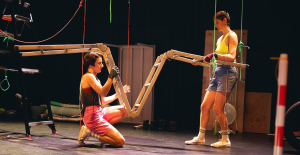 Paris Globe, a new international theater festival
Paris Globe, a new international theater festival Skoda Kodiaq 2024: a 'beast' plug-in hybrid SUV
Skoda Kodiaq 2024: a 'beast' plug-in hybrid SUV Tesla launches a new Model Y with 600 km of autonomy at a "more accessible price"
Tesla launches a new Model Y with 600 km of autonomy at a "more accessible price" The 10 best-selling cars in March 2024 in Spain: sales fall due to Easter
The 10 best-selling cars in March 2024 in Spain: sales fall due to Easter A private jet company buys more than 100 flying cars
A private jet company buys more than 100 flying cars This is how housing prices have changed in Spain in the last decade
This is how housing prices have changed in Spain in the last decade The home mortgage firm drops 10% in January and interest soars to 3.46%
The home mortgage firm drops 10% in January and interest soars to 3.46% The jewel of the Rocío de Nagüeles urbanization: a dream villa in Marbella
The jewel of the Rocío de Nagüeles urbanization: a dream villa in Marbella Rental prices grow by 7.3% in February: where does it go up and where does it go down?
Rental prices grow by 7.3% in February: where does it go up and where does it go down? Even on a mission for NATO, the Charles-de-Gaulle remains under French control, Lecornu responds to Mélenchon
Even on a mission for NATO, the Charles-de-Gaulle remains under French control, Lecornu responds to Mélenchon “Deadly Europe”, “economic decline”, immigration… What to remember from Emmanuel Macron’s speech at the Sorbonne
“Deadly Europe”, “economic decline”, immigration… What to remember from Emmanuel Macron’s speech at the Sorbonne Sale of Biogaran: The Republicans write to Emmanuel Macron
Sale of Biogaran: The Republicans write to Emmanuel Macron Europeans: “All those who claim that we don’t need Europe are liars”, criticizes Bayrou
Europeans: “All those who claim that we don’t need Europe are liars”, criticizes Bayrou These French cities that will boycott the World Cup in Qatar
These French cities that will boycott the World Cup in Qatar MLS: new double for Messi who offers victory to Miami
MLS: new double for Messi who offers victory to Miami PSG-Le Havre: Ramos on his way, Kolo Muani at the bottom of the hole… Favorites and scratches
PSG-Le Havre: Ramos on his way, Kolo Muani at the bottom of the hole… Favorites and scratches Football: Vasco da Gama separates from its Argentinian coach Ramon Diaz
Football: Vasco da Gama separates from its Argentinian coach Ramon Diaz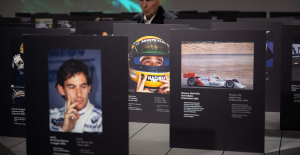 F1: for the French, Ayrton Senna is the 2nd best driver in history ahead of Prost
F1: for the French, Ayrton Senna is the 2nd best driver in history ahead of Prost





